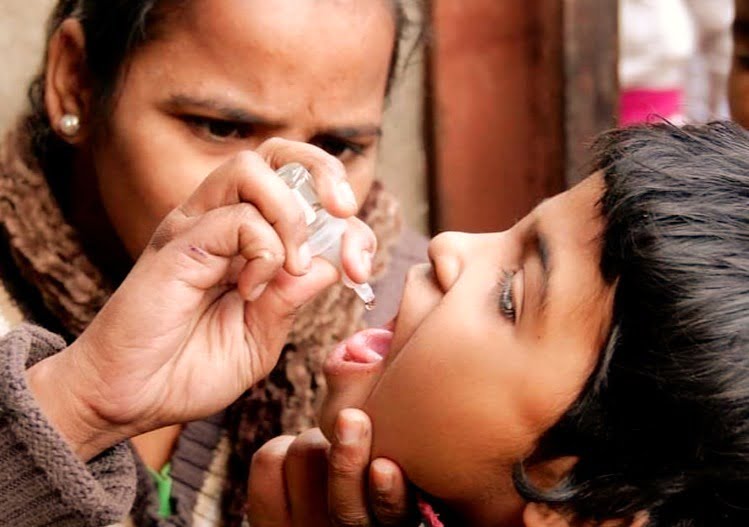Recently, the National Statistical Organization published a report called ‘Health in India’ based on the 75th round of the National Sample Survey of (July 2017- June 2018) on household social consumption related to health. The report said that only 59.2% of the children under five years, across the country, are fully immunized which contradicts the Centre’s Health Management Information System portal’s data which claimed that the fully immunized coverage stands at 86.7% for the year 2017-18.
According to the report, while almost all children receive their vaccination against tuberculosis and polio, two out of five children do not complete their immunization program. The immunization program includes a total of eight vaccinations in the first year of the child’s life. Soon after birth, a single dose of BCG vaccine is injected which is targeted at protecting the child from tuberculosis. Measles vaccine and oral polio vaccine’s (OPV) first dose is given at the time of birth and then followed by two doses at intervals of four weeks. There is also the DPT/pentavalent vaccine which is meant to protect the child from diphtheria, whooping cough, tetanus, Hepatitis B and meningitis and pneumonia caused by Hemophilus influenza type B. DPT should be injected in three doses. Between the age of 16-24 months, the child should be given the booster doses for OPV and DPT.
About 95% vaccinations in rural India and 86% in urban areas were carried out at the government health facilities and primary health centres the report said. It also said that about 97% of children received their first dose of vaccination (BCG/OPV) at birth and for many, this could be the only dose they received. Only 67% of these children are vaccine against measles and 58% of them got their OPV booster dose and 54% received their DPT booster dose.
In the national capital, Delhi, less than 50% of children have been given all the eight vaccines. States wise, Manipur stands first with 75% followed by Andhra Pradesh with 73.6% and Mizoram with 73.4% of children who are fully immunized. Nagaland occupies the first place from the bottom with only 12% of children fully immunized followed by Pondicherry at 34% and Tripura at 39.6%.
In December 2014, then Union Health Minister JP Nadda introduced ‘Mission Indradhanush’ which aimed at achieving 90% immunization coverage in India by 2020. In October 2017, PM Modi launched Intensified Indradhanush which revised the target and set December 2018 as the goal to achieve 90% coverage of full immunization. Despite the mission, the government couldn’t achieve their goals by 2018. The data from the report shows that the mission failed by a large percentage.
According to a study by WHO called ‘Exploration of inequality: Childhood immunization’, there are several reasons which contribute to the inequality of immunization in the selected 10 countries, of which, India was also one. Socioeconomic, geographic and demographic factors play a key role in the problem. A child born to a household in the richest wealth bracket in India is 2.26 times more likely to receive the critical, three-dose vaccine against diphtheria, pertussis (whooping cough) and tetanus (DPT3) than one born to the poorest, the report said.
Mothers’ education also factors in in immunising the child. Studies have shown that the more educated the mother is, the higher the child’s chances of getting vaccinated are. As mentioned above, children from wealthy families are more likely to get vaccinated than the poorer families. Another factor is the order of the child as the first-born child is more likely to get the full immunization program and possibility decreases from the second child onwards. Contrary to the usual findings, this study shows that the sex of the baby doesn’t play a role in immunization inequality.
The government of India launched Intensified Indradhanush Mission 2.0 in December 2019 with the aim to immunize children under 2 years of age and pregnant women against the eight vaccine -preventable diseases. The first round was completed in December 2019 and fourth round of the mission was supposed to launch in March 2020 which is believed to be hindered by the COVID 19 pandemic.
There is a need to improve the conditions and the access to the primary healthcare facilities across all the strata of the Indian society as the same facilities would be used to immunize people against the COVID 19 virus when a vaccine is available for use and of course, to achieve a higher percentage of coverage of fully immunized children.
– Jahnavi TR
– Bengaluru
References – https://www.thehindu.com/news/national/40-of-children-are-not-fully-vaccinated-says-nso-report/article32554855.ece
https://www.who.int/gho/health_equity/explorations-of-inequality-childhood-immunization



















































































